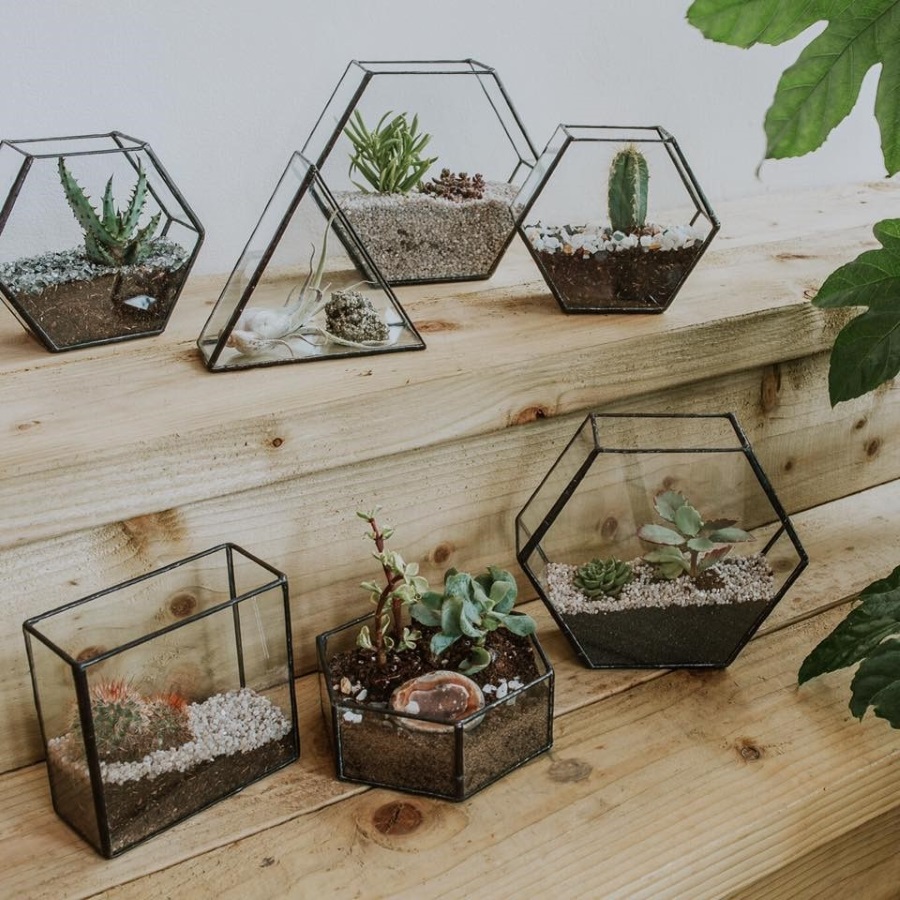How the growing trend for greenery can bring your staircase to life
The Pantone colour of 2017 is ‘Greenery’, a crisp and zesty shade symbolic of new beginnings. So how better to give your hallway and staircase a fresh overhaul by introducing some greenery, in the form of the real thing?
To gain a true insight into styling, caring for and ultimately getting the best out of house plants, we spoke to a range of experts, from plant advisors and succulent specialists to interior stylists, creative consultants, florists and interior landscapers. Read on to discover their tips and advice for bringing botanicals to your ballustrades…
Meet our Plant Experts
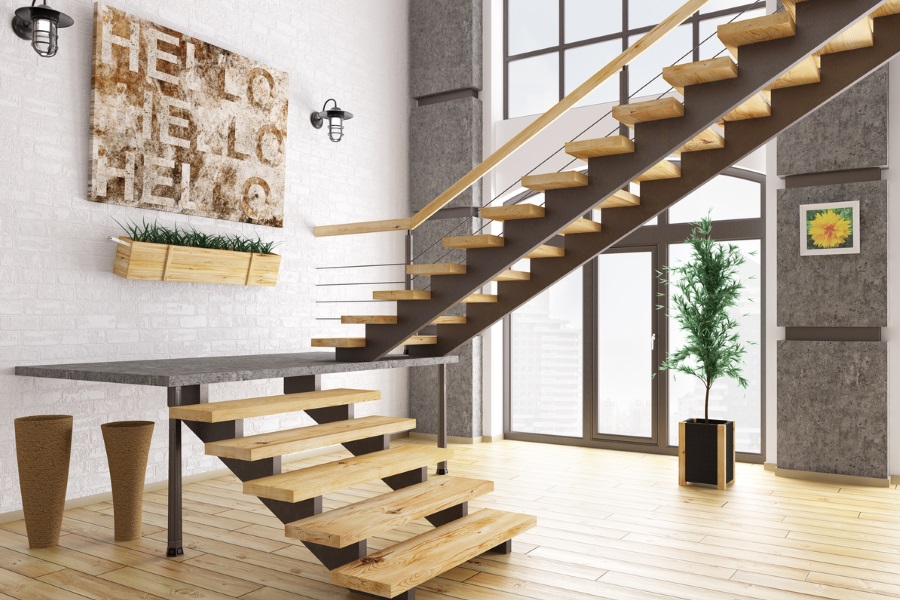
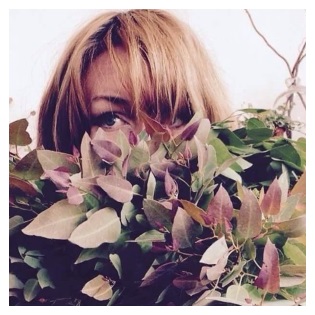 |
Emma Venn – Moss & CloverEmma is a passionate florist, and her stunning displays and funky terrariums can be found in her shop Moss and Clover, in the heart of Sheffield’s leafy village-in-a-city Nether Edge. |
Lou Archell - LittlegreenshedFreelance writer, blogger, creative consultant and photographer, Louruns the blog Littlegreenshed, one of the UK’s leading lifestyle blogs, writing about her passion for flowers, styling, interiors and much more. |
 |
 |
Fiona Wemyss - Blueleaf PlantsFiona is the owner of Blueleafplants, a nursery which specialises in growing and propagating succulent plants. Fiona has won awards for her displays at the RHS and the Kent Country Show and is in high demand for her stunning interior arrangements, wedding and special event displays and green roofs. |
Alan Page – Urban PlantersAlan is the Franchise Director of Urban Planters, an interior and exterior landscaper with branches across the UK and in Madrid. Alan has worked in horticulture for over 25 years and is passionate about the way plants bring indoor spaces to life, with their many health benefits and natural good looks. |
 |
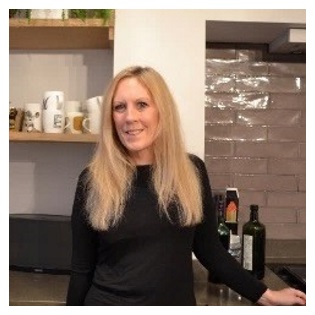 |
Lisa Dawson – Lisa Dawson StylingLisa is an interiors blogger and home stylist, who writes a weekly blog on styling a home on a budget. She also runs ‘Styling Your Home’ workshops, focussed on exploring individual style and implementing it into the home. |
Judy Feldstein - Houseplant411Judy runs the popular website Houseplant 411, a valuable resource for identifying and caring for houseplants. Operating under the title ‘Your personal online indoor plant advisor’ Judy answers all plant related questions for her readers. |
 |
Ask the Experts…
To get an idea of the best way to integrate house plants into a hallway or staircase, we asked plant expert Lou Archer, interior stylist Lisa Dawson, interior landscaper Alan Page, florist Emma Venn and succulent specialist Fiona Wemyss the following questions:
What are the best statement houseplants to use in 2017?
 |
Lou: This year it’s all about anything structural. We've had fiddle leaf figs, and tumbling strings of pearls. I think we will also see trees being brought inside, particularly the olive tree, which would make a great statement at the bottom of a staircase. |
 |
Lisa: Monstera for a seventies/mid century/ethnic vibe. Fiddle leaf fig is structural, giving off both a Scandi and ethnic vibe and Ssnecio Rowleyanus (string of pearls) is great for introducing lots of texture. |
 |
Alan: Big leafed plants enjoyed the limelight last year and they look set to be the statement plant of choice again this year. |
 |
Emma: Big statement plants that were huge in 70s are making a comeback - monsteras (cheese plants) and tall palms can make a bold feature in a hallway. Also big for 2017 are cascading plants, such as string of hearts (gorgeous heart shaped leaves) and string of pearls (which look like little peas) and the good old spider plant! Air plants have become ridiculously popular too - they come in a range of shapes, colours and sizes and look great in small hanging glass domes and terrariums. |
Succulents and cacti are still really making a cool statement - the bigger, the better! The absolute favourite at the moment is the Chinese money plant (pilea peperomioides) - with its rounded disk leaves, they really make a statement. I love them too, as they make so many babies - so you can share this gorgeous plant with your friends!
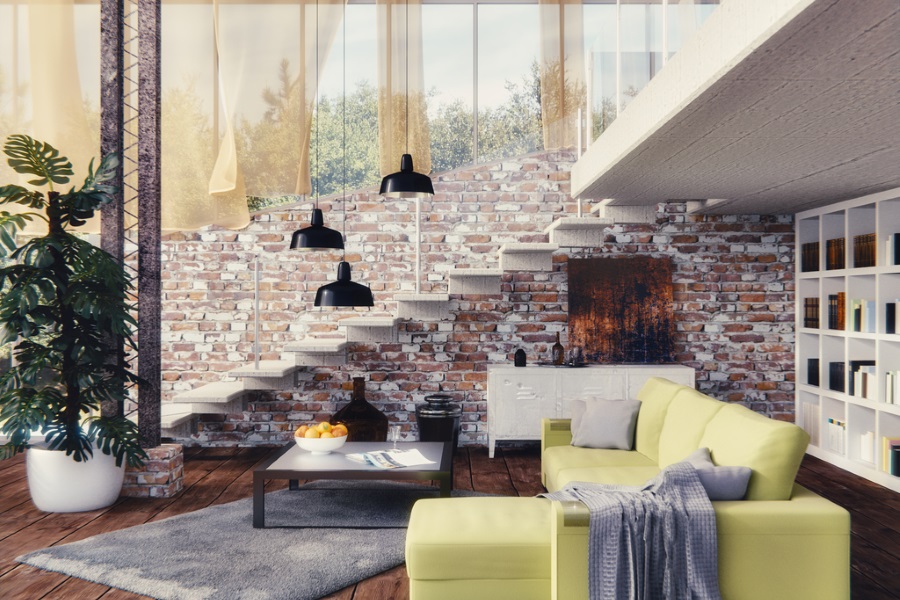
Which houseplants would suit a staircase without much natural light?
 |
Emma: Air plants and ferns. With ferns however, you need to ensure that you spritz their leaves once a week. |
 |
Lou: Sansevieria, commonly known as mother in law’s tongues are particularly indestructible.They can grow with little light and watering, perfect for shady hallways or high shelves above the stairwell, especially if you are a forgetful gardener or if you travel a lot. |
 |
Alan: Big-leafed plants can thrive in lower light areas, but are a little too large for use directly on stairs. The other option is artificial planting. You can get really good quality, life like replica plants these days, which can be used anywhere, regardless of light levels, and also won’t mind being constantly brushed against in a busy area such as stairs. For safety reasons we don’t like to use any type of plants directly on stairs, instead, we focus on nearby areas or the walls. Plants look great, for example, at the bottom of stairwells which curve or bend around, bringing life to often unused and dull spaces. Hanging plants, small displays on shelves or living walls are all great solutions for planting on stairwell walls. |
 |
Fiona: All succulents require a good natural light source although some prefer more than others. None of them will grow in a completely shaded area, so if there is no light or very poor light in your stairway – choose another type of plant. A rule of thumb to consider is the more colourful the plant, the more likely it is that it will require a lot of light. |
 |
Lisa: I would suggest spider plants, peace lilies, parlour palms and monstera. |

Which houseplants would suit a staircase with lots of natural light?
 |
Lou: A hanging plant such as a string of pearls or a donkey tail plant. Both of these are part of the succulent family and like a good sunny position. Hang them high above the staircase to get the full benefit from the trailing leaves. |
 |
Lisa: Fiddle leaf fig, cacti, yuccas. Position them on a sunny windowsill on a half landing or in the hallway to create a cool little display. |
 |
Fiona: People without a lot of space but with a very sunny south-facing window on their staircase could grow lithops (living stones). These are small South African plants that look like small pebbles or toes and have yellow or white flowers. They look stunning in a shallow tray mixed together to form a gravelly tapestry. For something taller and a bit more spectacular, euphorbia trigona ‘Rubra’ is an amazing plant and will reward you with a display of reddish green mottled stems rimmed with red bracts. |
 |
Emma: Any desert dwelling plant such as cacti and succulents (including the cascading ones mentioned before). |
 |
Alan: Smaller-leafed plants are best suited to higher light levels, and can take up less space on busy thorough fares like stairways. |
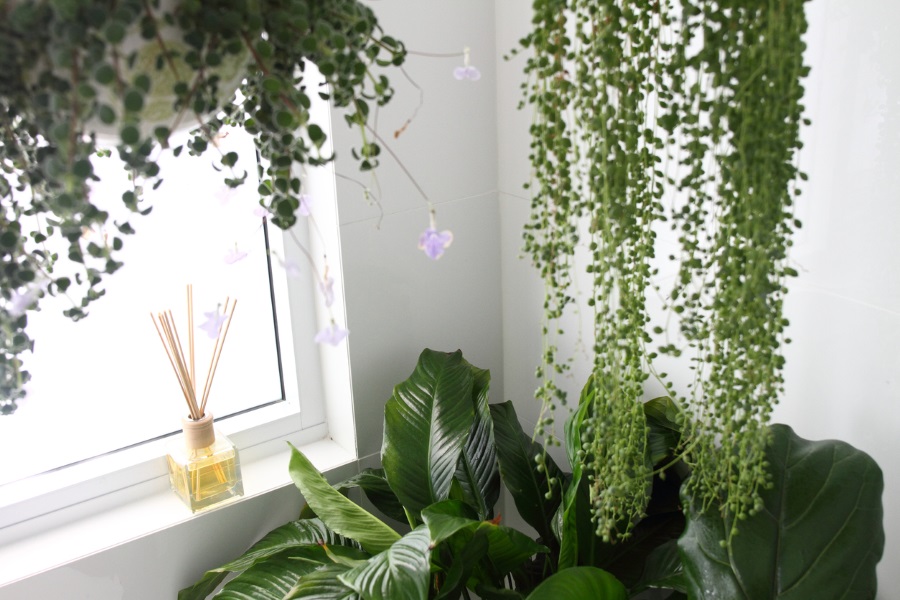
What would you suggest to dress a staircase with low maintenance houseplants, for people who love the style but aren’t very good with upkeep?
 |
Fiona: My top succulents for impact and an easy-care regime would be crassula ovata, aloe aristata and sansevieria cultivars. All of these plants can tolerate some partial shade and can also cope with being neglected. None of them require a lot of watering or feeding and can be safely left for several weeks without any water. During the winter months all succulents should be left mainly completely dry. |
 |
Lisa: Spider plants, cacti, tradescantia, ivy. |
 |
Emma: Succulents and cacti - they only need watering March to September, once a month and re-potting a couple of times a year (with cactus/succulent soil). |
 |
Alan: The obvious answer here is the classic cacti. They are of course extremely hardy: if they can survive in a desert, they should be fine with a bit of owner neglect! They also come in lots of interesting shapes and sizes. For something a bit different, and also on trend, try succulents or terrariums. Succulents are a great choice for stairways as they can sit in all kinds of spaces and aren’t too precious about being cared for. Terrariums have been very popular in recent years. You can get some very smart glass frame structures for mini terrariums at the moment and they could sit happily on a shallow shelf along a stairway, bringing a bit of visual interest as you go up and down the stairs. |
 |
Lou: House leeks (sempervivum). These small succulents come in a variety of shapes and colours and need very little maintenance. Why not pot them up in a pretty bowl or hanging glass terrariums between the spindles on your balustrade to add interest to your staircase? |
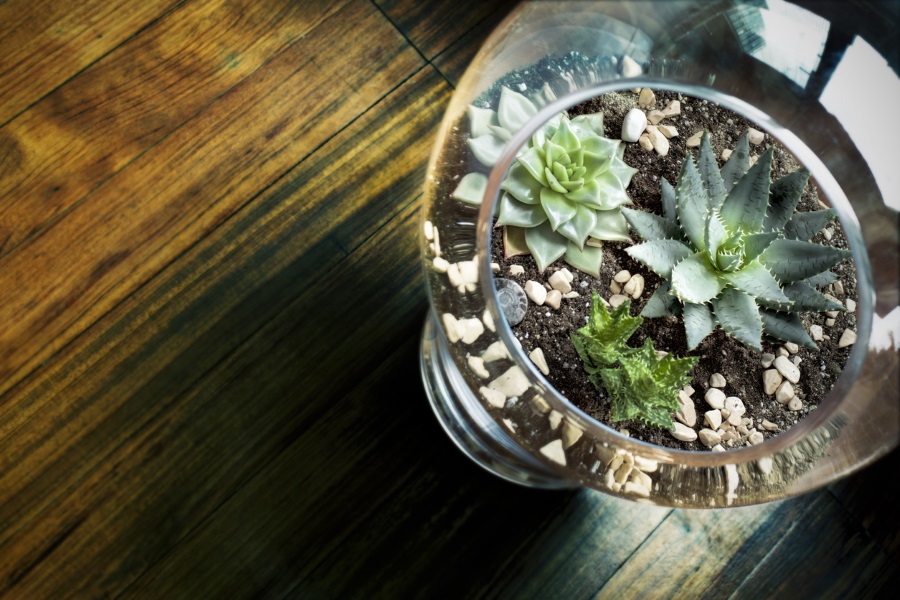
What are the best accessories for styling house plants around your staircase?
 |
Alan: We’ve seen a lot of macramé hanging planters recently - very 70s. Concrete and other industrial-style planters seem to be ceding to softer-looking pots, even fabric ones. So, in general, there is definitely a softer feel to plant accessories this year. |
 |
Lou: There is big trend at the moment to have a 'plant gang' - a grouping of similar style plants together. There are plenty of great planters/tables which allow you to have a mini garden in your hallway, or if there is enough room, as a feature on a half landing. |
 |
Fiona: Terrariums are very popular at the moment and catch the light if placed in a sunny spot. Careful watering is key – too much and too frequent will drown the plants. Plants like the haworthia and some smaller aloes mixed together with echeverias and similar plants would be perfect. Don’t overplant and find some attractive gravel or glass beads to decorate. Macramé hangers can be used for trailing succulents. Favourites would include crassula rupestris Ssp. marnieriana – a trailing ‘stacked’ plant that has stiff architectural shaped leaves that spring out from the centre of the plant, crassula rowleyanus (or string of beads) – a plant that has round green leaves suspended along a wiry stem, or sedum morganianum (known as burro’s tail) – another trailing plant with small succulent blue-green leaves that terminate with reddish-pink flowers in the summer. |
 |
Lisa: House plants add huge amounts of interest to your interior scheme. Team them with natural textures and put them in unexpected places, such as hanging from a cork board or between stair spindles. They look fabulous styled in belly baskets or canvas bags on shelves or windowsills, or in hanging macramé holders – think out of the box when it comes to what you place them in. Small cacti look fabulous in terrariums and are suitable for all areas of the home. |
 |
Emma: For 2017, terrariums and macramé are still going to be huge, perfect for decorating staircases. Kokedama (Japanese moss balls) are really hot at the moment - they really do bring the outside in. The latest trend is actually aquatic terrariums: underwater plants and moss balls! |
What are the interior styles/colours for 2017 that fit well with lots of greenery?
 |
Lisa: The Pantone Colour of the Year is Greenery and as a result, botanics are seriously on trend. From wallpaper to fabrics to the paint colour itself, plants are hot and can be incorporated into any space. Natural textures such as leather, marble, sheepskin and wool are given a cool boho look when you add plants into the environment. The current seventies/ethnic vibe lends itself perfectly to house plants. |
 |
Emma: The best way to show off greenery is with a bold background colour - preferably white, but as I can appreciate, with children, it's not always possible! Other great colours are deep blues, greys and pale greens. Anything bold would also 'go' - my personal fave is magenta pink and green (the colours of Moss & Clover)! |
 |
Lou: In my opinion there is a plant out there that will go with any interior style.But colours I love are soft grey and white, which give a great backdrop to your plants. |
How would you personally use houseplants to style a staircase/hallway?
 |
Emma: Small succulents and cacti would look great on staircases - especially the afore-mentioned trailing ones. Mini globe terrariums would also look fab. |
 |
Lou: Space is pretty limited in the hallway and staircase so think about hanging plants which can free up the floor space. A hallway usually has high ceilings, which is a great space to hang plants. |
 |
Lisa: In my own home, I have a huge yucca plant at the top of the stairs and a monstera at the bottom. You can hang macramé hangers from the bannister using spider plants, string of pearls and ivy to really make an impact. |
 |
Alan: There are many inspired ways to have planting on walls: trailing plants are very popular at the moment, as are wall-mounted pots. We are big fans of the living wall. A living wall takes up virtually no space but allows you to pack an area with vibrant, air-cleaning plants. You can create designs by carefully placing plants in different colour and textures around the wall. |
If you are a bit daunted by the prospect of an entire wall of plants, you could go for a micro version: plant art is a small cluster ofvertically-arranged planting in a frame, creating a piece of living art and no doubt a talking point for visitors, too. If you really want something different, and keep the actual stairs clear, then there are such things as upside-down planters. We have hung flowering plants from ceilings in rooms with little floor space to great effect and they would look fantastic above a staircase.
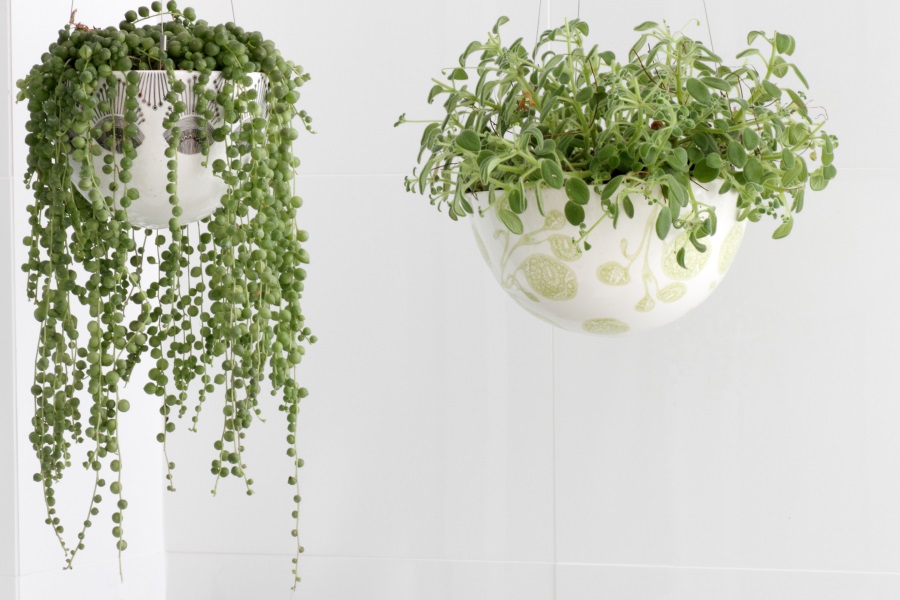
Do you have any tips for using houseplants on more unusual stairway areas, such as a half landings, window seat, large windowsill etc.?
 |
Emma: On half landings I would be tempted to put a big statement plant there such as the monstera (needs plenty of light!), a calathea, a palm or a dracaena. Don't forget to dust their leaves so that they can absorb the all-important sunlight. |
 |
Fiona: Using tiered staging or an attractive table on a half landing allows plants to be raised up closer to a window or skylight and enables plants to be positioned better according to their light requirements. Tall plants, like the sanseveria, do look particularly effective near windows and don’t take up too much room because of their shape so would be good beside a window seat. For deep windowsills, there is much more choice. |
I would suggest mixing plants using colour, shape and texture and creating mixed containers filled with different succulents. Depending on the aspect you can really go to town using silver graptopetalums, blue senecios, orange sedums together with echeverias and euphorbias matched with a range of different containers. You could plant succulents in pretty thrift shop tea cups and saucers or antique copper kettles so mixing old and new. Just ensure that each container has good drainage by drilling a hole in the bottom and resting the container on a suitable saucer to stop damage to the surface underneath.
 |
Lisa: House plants are perfect for making an unused space feel more interesting. Again, in my own home I have large plants in belly baskets on the half landings and team them with prints and small pieces of furniture (such as a bookcase) to create a focal point where otherwise there would be none. |
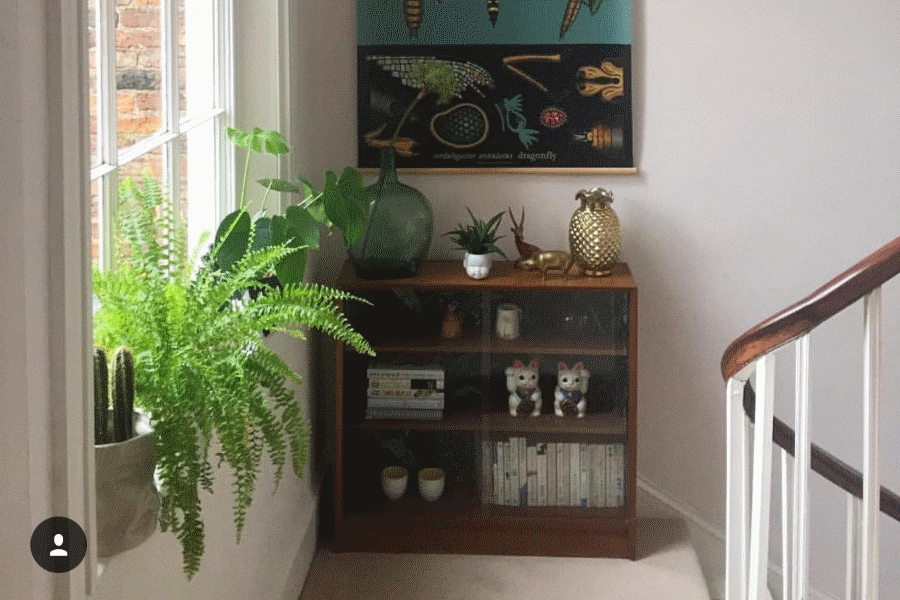
Judy Feldstein’s ‘At a Glance Guide’ to Staircase Houseplants
 |
Judy Feldstein from Houseplant411 gives us her ‘At a Glance Guide’ to houseplants suitable for hallways and staircases… |
The best houseplants for making a statement on your staircase |
|
Houseplants for staircases without much natural light |
|
Houseplants to suit a staircase with plenty of natural light |
|
Low maintenance houseplants for high staircases |
|
Sensational Succulents
 |
As mentioned in the above interviews with our plant experts, succulents have become hugely popular in the interiors world. It’s no real surprise as they can create a dramatic effect, especially when displayed en masse, they are also relatively cheap and easy to care for, making them an excellent all-round style hit. To find out more about succulents and how they can be best used to enhance a hallway and staircase, Fiona Wemyss shares her knowledge on the most popular succulents that are readily available (and not too expensive) here in the UK. |
 |
Aloe veraAloe vera is very easy to grow and it forms numerous ‘pups’ that can be split off from the parent plant and passed on to friends and family. It is well known for its sap that is used to soothe burns and skin conditions. A mature plant can reach a height of approximately 18-24” - it has long fleshy leaves with mottled white striations. It seldom flowers in cultivation in my experience, but older plants are handsome. This plant is not cold tolerant and does best in a warm spot, however it can tolerate partial shade. This makes it a good choice for a staircase that doesn’t receive a great deal of natural light. |
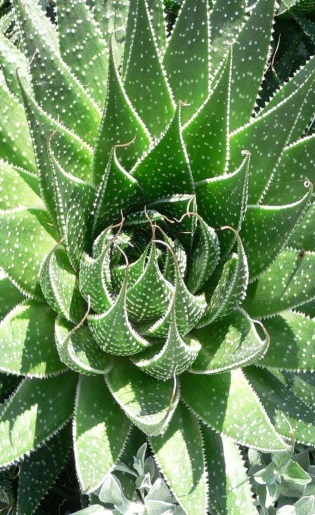 |
Aloe aristataAloea aristata is sometimes referred to the lace aloe because of the white fronds that form along the leaf margins. It sends off numerous offsets over time and each rosette will throw out tall flowering stalks in late spring/early summer. These stalks are topped by pendulous red-orange flowers that last up to 10 days before fading. This is an attractive low-growing aloe that looks attractive in round pans or containers. It is a very long-lived plant that requires little care – just a splash of water occasionally through the growing season. This makes it an ideal low maintenance choice for hanging planters or terrariums positioned in hard to reach spots over the higher parts of the staircase. |
 |
Sansevieria trifasciataSansevieria trifasciata is commonly referred to as the snake plant or derivatively ‘Mother-in-Law’s Tongue’. Very popular in the 1960s and 1970s, this long-lived and attractive plant comes in many different forms and is a popular houseplant. The leaves vary from being long and strap-like (as in this species pictured) to being cylindrical or short and broad. A number of the plants available are variegated, which adds to their attractiveness. Mature plants will flower, but the flowers, though interesting, are not very significant. Sansevierias cannot tolerate cold for long periods but can cope with partial shade as well as sun. These plants look great as a group display, and can make a real statement lined up as a feature along a half landing windowsill. |
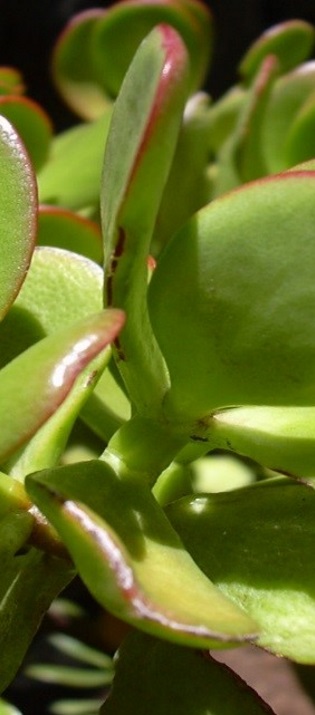 |
Crassula ovata (the money plant)Crassula ovata is another plant from the 1970s and still found in many houses and takeaway restaurants because of its ability to withstand neglect. There are more attractive cultivars around nowadays: some with twisted leaves others with a more dwarfing habit and also several variegates - some with red and orange tinged leaves. The typical money plant has thick, succulent stems that branch into a small tree-like structure. The leaves are fleshy and shiny and when the plant is happy, it can produce attractive white flowers. When plants are ‘shocked’ either by cold or too much or too little water, they have a tendency to drop their leaves or sometimes whole branches. It is possible sometimes to root the fallen branches to form new plants. Money plants are easy to look after and are tolerant of partial shade as well as sun. Large plants can reach a metre in height and are real statement plants. This makes them a good choice for positioning at the foot of the stairs or as a feature in the corner of a half landing. |
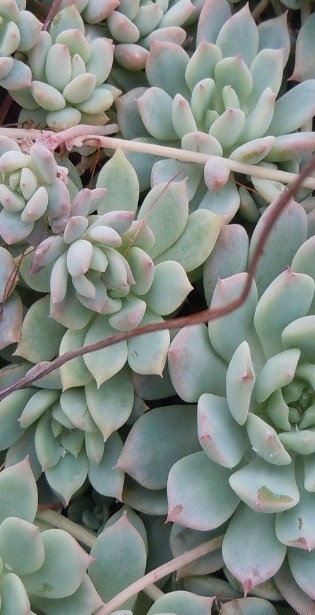 |
Echeveria ’Perle von Nurnberg’This pearly pink beauty can be found for sale in many garden centres and popular supermarkets. It is one cultivar from a very diverse group of rosette plants that originate from mostly Mexico and South America. The plant is surprisingly cold-tolerant (many are found at very high altitudes in the wild) but cannot tolerate shade. Plants should be placed as close to a light source as possible, south or west facing windows are best, otherwise the flat rosette will stretch towards the light and become pale and straggly. There are many other lovely echeverias in shades of blue and green and even red and orange, but they mostly have the same requirements in terms of light. The plants all flower though at different times of the year, and these pretty orangey-pink bell-like flowers only add to their charm. These are great plants for bowl gardens or mixed arrangements for sitting on a hallway or landing windowsill. |
A quick fix for a long term look
There are many ways to style your staircase, however house plants are the perfect way to get a fix of colour and texture quickly and on a budget. Not only that, the effort required to integrate greenery is minimal in relation to the stunning effect that can be achieved.
Different planters, pots and terrariums add additional detail to your houseplants, look out for hanging styles that can add detail to your balustrade, and can also be very effective suspended over the staircase itself.
Even if you are a complete novice at gardening, the above advice from our plant experts will ensure that you will choose the correct plants to suit your space, no matter how light, dark, big or small it may be.
